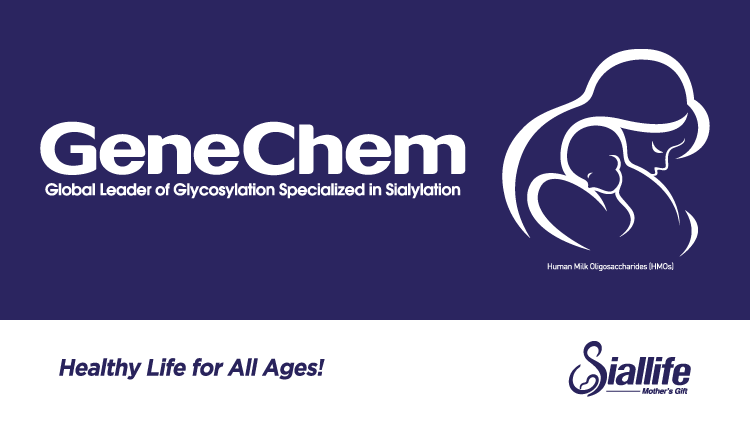Promotional Features
Sialyllactose: Proven novel ingredient for osteoarthritis
The therapeutic potential of human milk oligosaccharide (HMO) sialyllactose has fascinated researchers for decades. After attracting attention in the 1980s, a new set of scientists to revitalize the sector by studying the effect of synthesized sialyllactose in osteoarthritis (OA) and other indications.
The therapeutic potential of human milk oligosaccharide (HMO) sialyllactose has fascinated researchers for decades. After attracting attention in the 1980s, interest in the molecule fell away, only for a new set of scientists to revitalize the sector by studying the effect of synthesized sialyllactose in osteoarthritis (OA) and other indications. Now, the science and infrastructure has advanced to the point that the HMO is ready to disrupt the joint health market.
Researchers at the University of Oxford studied bovine sialyllactose in the 1980s, generating evidence the molecule acts on rheumatoid arthritis by disrupting or disaggregating immune complexes in the serum and synovial fluid. Based on the data, Monsanto Company acquired the patent rights with the intention of developing sialyllactose as a pharmaceutical therapy. However, the project never resulted in a commercial sialyllactose product and the patent expired.
Ajou University revitalized interest in sialyllactose in 2017 when it published the findings of studies of a form of the molecule produced by enzymatic synthesis. GeneChem synthesized the 3’-sialyllactose (3'-SL) used in the studies.
In a study of sialyllactose in an OA mouse model, the Ajou researchers showed the molecule protects against osteoarthritic cartilage destruction.1 Mice that received sialyllactose for 10 weeks had significantly lower scores on a measure of cartilage destruction than their counterparts on placebo.
The researchers uncovered the mechanisms through which sialyllactose promotes cartilage regeneration and inhibits cartilage degradation. Sialyllactose suppresses expression of three enzymes, Mmp3, Mmp13 and Cox2, induced by proinflammatory cytokines to inhibit cartilage degradation and inflammation. At the same time, the molecule promotes production of the collagen Col2a1 and accumulation of sulphated proteoglycan in articular chondrocytes and cartilage explants. The effects drive cartilage formation.
Researchers at Ajou also showed that sialyllactose regulates anabolic and catabolic factor expression. The mechanism of action addresses the root of OA, a condition in which the induction of catabolic factors and down-regulation of anabolic factors leads to cartilage degradation.
Validating sialyllactose in animals and humans
The findings of the researchers spurred further studies of the HMO in large animals. In mini-pigs with OA, sialyllactose reduced stride time and improved range of motion. Analysis of the joints of the mini-pigs linked sialyllactose use to significant improvements on a measure of cartilage destruction. Mini-pigs that took sialyllactose had reduced cartilage structure disruption and cartilage density score, cells implicated in the pathogenesis of OA. This showed that the damaged cartilage was restored.
While a separate mini-pig study found administration of sialyllactose was unable to tackle symptoms of rheumatoid arthritis, the data supported further development in OA.2 Yonsei University took up the challenge of generating more evidence of the effects of sialyllactose, including by studying the molecule in chondrocytic cells and in humans.
The chondrocytic cell research provided additional evidence that sialyllactose activates the antioxidant defense system and suppresses inflammatory responses. Specifically, the researchers linked the molecule to increased levels of enzymatic antioxidants that suppressed IL-1β-induced oxidative stress, and to the reversal of IL-1β mediated expression levels of reactive oxygen species.
Based on growing preclinical evidence of the efficacy of sialyllactose, the Yonsei researchers ran a pilot study and clinical trial in OA patients with knee pain. The clinical trial randomized 60 patients aged 40 years and older to receive placebo or one of two doses of sialyllactose and measured their scores on K-WOMAC, a health assessment tool for patients with arthritis in lower extremities, and 100mm-VAS, a pain scale, at baseline, week six and week 12. Patients on sialyllactose showed improved function and reduced pain.
Generating objective evidence of efficacy
While improved function and reduced pain are important outcomes, the scales used to track the changes rely on input from patients and as such are subjective. To show conclusively that a molecule is working, an objective assessment of its impact is needed. Sialyllactose is a rare example of a molecule that is supported by objective evidence of efficacy in OA.
The evidence comes from MRI evaluations of recipients of sialyllactose. Specifically, researchers linked the use of sialyllactose to statistically significant changes in femoral and patella cartilage scores. Patella and femoral cartilage scores increased in the placebo group and decreased in the sialyllactose cohorts. T2 mapping, a sensitive method for the detection of early cartilage degeneration, showed sialyllactose inhibited the degeneration of cartilage and promoted its regeneration.3
The image is knee MRI image by T2 mapping, T2 mapping is a sensitive method for
the detection of early cartilage degeneration at the patella in the unloaded joint.
Equipped with evidence of the effect of sialyllactose on both subjective and objective measures of OA, dietary supplement brands can position themselves to win market share in the joint health category. GeneChem is equipped to help brands leverage the evidence in support of the molecule. The company started construction of an industrial scale sialyllactose factory early in 2022, setting it up to provide the industry with 3’-sialyllactose and 6’-sialyllactose, molecules that either have or are nearing GRAS designation.4–5
With the factory scheduled to begin operation in 2022, sialyllactose is now positioned to fulfill the potential that excited researchers in the 1980s. Brands that partner with GeneChem to realize the opportunity of the proven novel ingredient stand to win joint health market share by delivering a clinically validated OA supplement.
More details about Sialyllactose are available upon request by emailing vasb_fvnyynp@trarpurz.pb.xe
Related keywords: 3'-Sialyllactose, 6'-Sialyllactose, 3'-SL, 6'-SL, Sialyllactose, Joint health, GeneChem, Osteoarthritis, Degenerative arthritis
References
1. Jeon, J. et al. 3’-Sialyllactose protects against osteoarthritic development by facilitating cartilage homeostasis. J. Cell. Mol. Med. 22, 57–66 (2018).
2. Kim, Y. J. et al. Therapeutic effect of intra-articular injected 3’-sialyllactose on a minipig model of rheumatoid arthritis induced by collagen. Lab. Anim. Res. 38, 8 (2022).
3. Apprich, S. et al. Quantitative T2 mapping of the patella at 3.0T is sensitive to early cartilage degeneration, but also to loading of the knee. Eur. J. Radiol. 81, e438–43 (2012).
4. GRAS Notices. FDA
5. GeneChem builds a commercial-scale factory to meet demand for sialyllactose. nutraingredients.com (2022).




